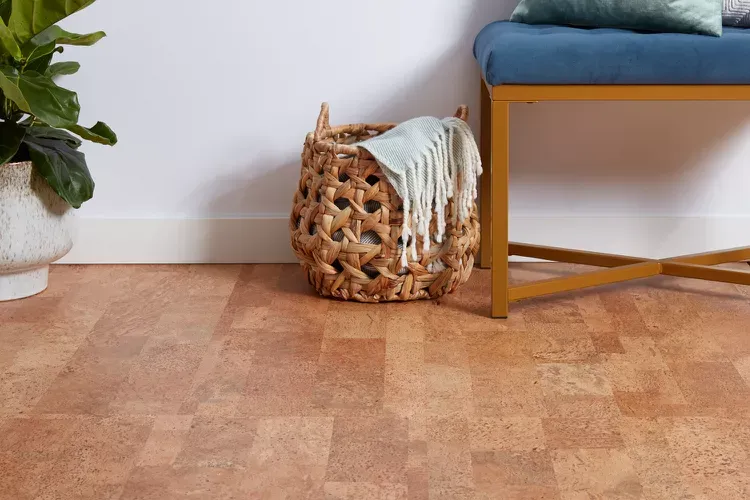In the quest for sustainable living, every aspect of our lifestyle, including our homes, plays a crucial role in reducing our environmental footprint. Flooring choices, in particular, can significantly impact both the planet and our indoor air quality. Eco-friendly flooring options, such as cork, bamboo, and recycled materials, offer a greener alternative to traditional flooring materials like hardwood or carpet. In this article, we'll explore the advantages and disadvantages of eco-friendly flooring options, along with suggestions for improvement and a conclusion on their role in sustainable living.
Advantages of Eco-Friendly Flooring:
Renewable Resources: Cork and bamboo are both renewable resources that can be harvested without causing long-term damage to the environment. Cork is harvested from the bark of cork oak trees, which regrow after harvesting, while bamboo is a fast-growing grass that can be harvested every few years.
Low Environmental Impact: Eco-friendly flooring options have a lower environmental impact compared to traditional materials. They require fewer resources to manufacture and produce less waste during the production process.
Improved Indoor Air Quality: Many eco-friendly flooring options are made from natural materials that emit fewer volatile organic compounds (VOCs) and other harmful chemicals. This can lead to improved indoor air quality and a healthier living environment.
Durability: Cork and bamboo flooring are known for their durability and resilience. They can withstand heavy foot traffic and are resistant to scratches, dents, and stains, making them suitable for high-traffic areas in the home.
Unique Aesthetic: Eco-friendly flooring options offer a unique aesthetic that can add character and warmth to any space. Cork flooring, for example, has a distinctive texture and pattern, while bamboo flooring has a natural, contemporary look.
Disadvantages of Eco-Friendly Flooring:
Cost: Eco-friendly flooring options can be more expensive upfront compared to traditional materials like hardwood or carpet. However, they may offer long-term cost savings due to their durability and energy efficiency.
Limited Availability: Depending on your location, eco-friendly flooring options may have limited availability or selection compared to traditional materials. This can make it challenging to find the right flooring option for your needs and preferences.
Sensitivity to Moisture: Cork flooring is susceptible to moisture damage and may not be suitable for areas with high humidity or moisture levels, such as bathrooms or basements. Proper installation and maintenance are essential to prevent water damage.
Scratch Resistance: While cork and bamboo flooring are durable, they may be prone to scratching from heavy furniture or pet claws. Using felt pads or area rugs can help protect the surface and minimize damage over time.
Suggestions for Improvement:
Increased Awareness: Educating consumers about the benefits of eco-friendly flooring options and their impact on the environment can help increase demand and availability.
Product Innovation: Investing in research and development to improve the performance and durability of eco-friendly flooring materials can help address some of the limitations and concerns associated with these options.
Collaboration with Designers: Collaborating with architects, interior designers, and home builders to incorporate eco-friendly flooring options into residential and commercial projects can help promote their adoption and mainstream acceptance.
Government Incentives: Offering tax incentives or rebates for homeowners and businesses that choose eco-friendly flooring options can encourage more widespread adoption and investment in sustainable building practices.
Conclusion:
Eco-friendly flooring options such as cork, bamboo, and recycled materials offer a sustainable and environmentally conscious alternative to traditional flooring materials. While they offer numerous advantages, including renewable resources, low environmental impact, improved indoor air quality, and durability, they also have some limitations, such as cost and sensitivity to moisture. By addressing these challenges and investing in product innovation, awareness, and collaboration, eco-friendly flooring options can play a significant role in promoting sustainable living and reducing our carbon footprint. As consumers become more conscious of their environmental impact, eco-friendly flooring options are likely to become increasingly popular choices for homes and businesses alike.

Upvoted. Thank You for sending some of your rewards to @null. Read my last posts to make sure that BLURT burning is profitable for you. Before using this bot please make sure your account has at least 100 BP. Get more BLURT:
@ mariuszkarowski/how-to-get-automatic-upvote-from-my-accounts@ blurtbooster/blurt-booster-introduction-rules-and-guidelines-1699999662965@ nalexadre/blurt-nexus-creating-an-affiliate-account-1700008765859@ kryptodenno - win BLURT POWER delegation